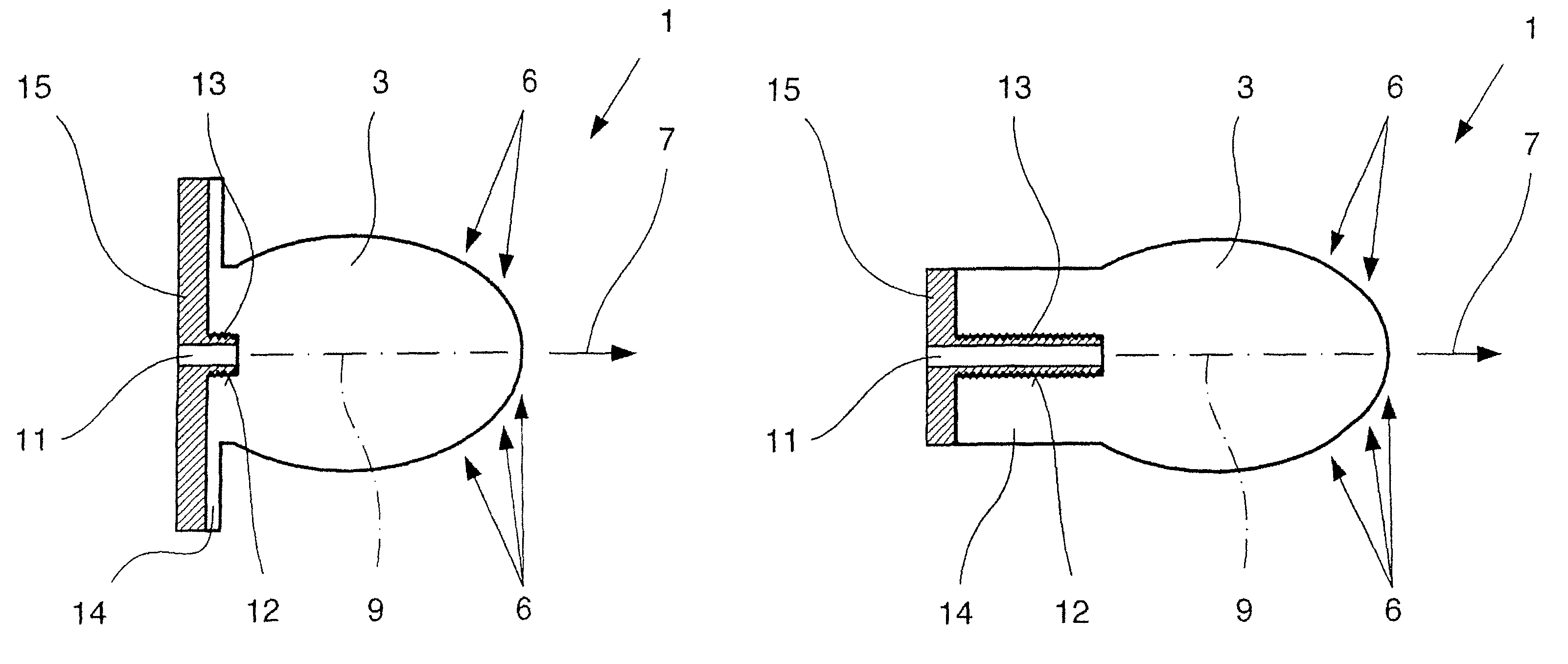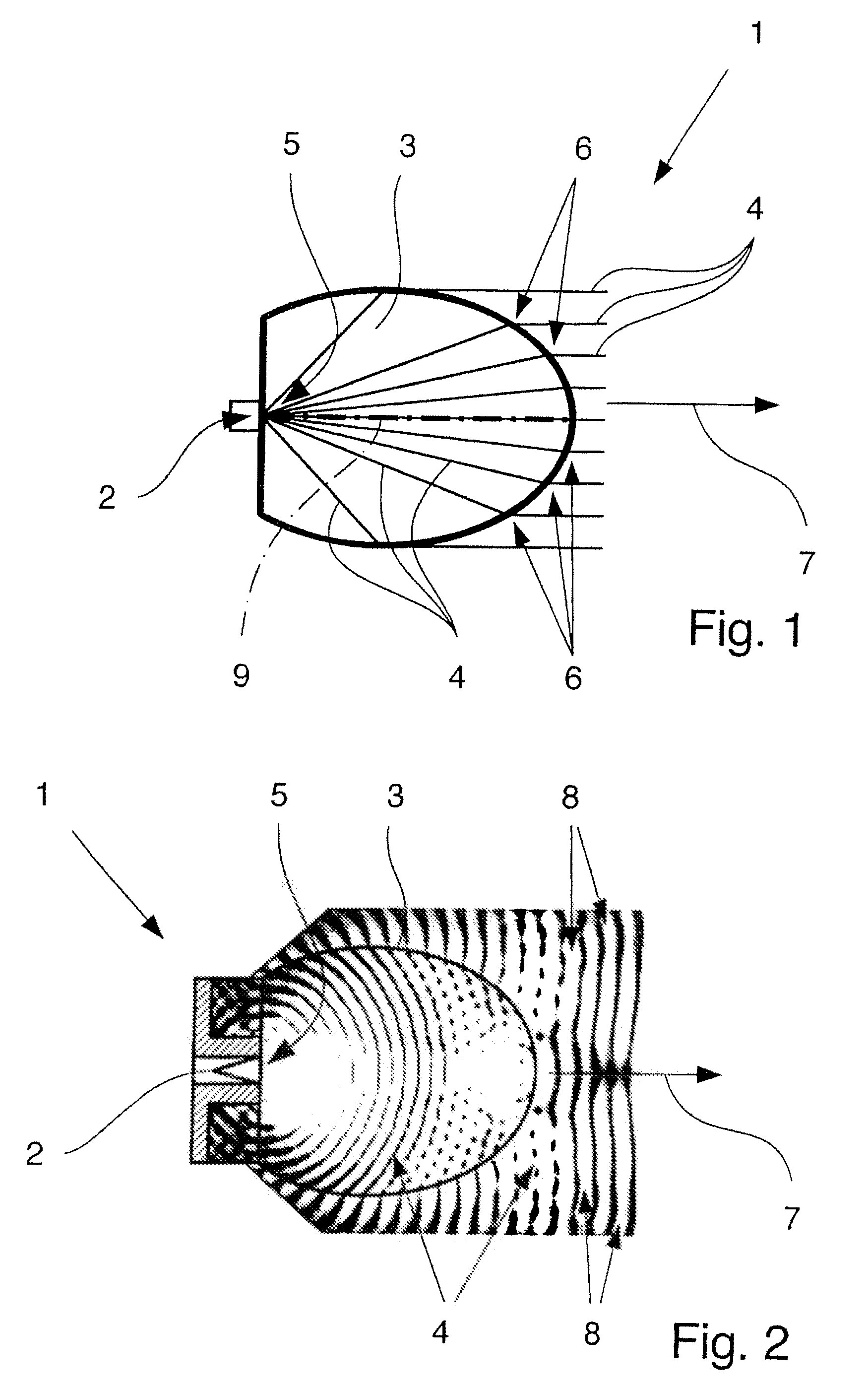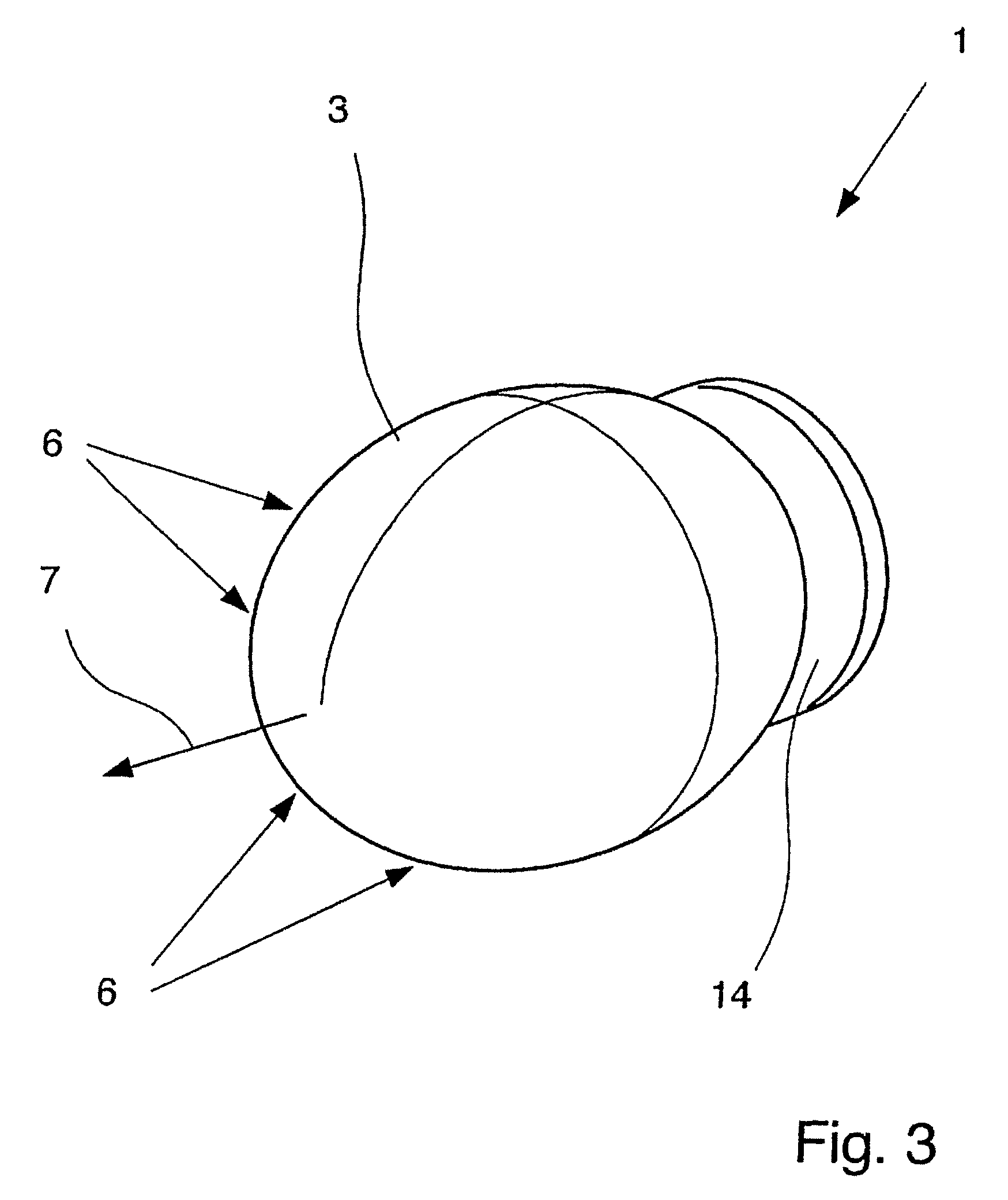Dielectric antenna with an electromagnetic feed element and with an ellipsoidal lens made of a dielectric material
a dielectric material and dielectric antenna technology, applied in the direction of antennas, basic electric elements, electric apparatus, etc., can solve the problems of dielectric antennas, high requirements for attainable hygiene, and contradictory requirements with respect, so as to minimize the number of intermediate spaces and transition sites between the lens and the electromagnetic feed element. , the effect of good encapsulation of the antenna
- Summary
- Abstract
- Description
- Claims
- Application Information
AI Technical Summary
Benefits of technology
Problems solved by technology
Method used
Image
Examples
Embodiment Construction
[0032]FIGS. 1 to 7 show a dielectric antenna 1 with an electromagnetic feed element 2 and with a lens 3 made of a dielectric material. The manner of operation of the antenna 1 is always based on the feed element 2 emitting electromagnetic radiation 4 and the lens 3 being supplied with electromagnetic radiation 4 in the feed region 5, the lens 3 relaying the electromagnetic radiation 4 and emitting it with the transmission region 6 of the lens.
[0033]In all figures it is shown that the lens 3 is shaped ellipsoidally at least in the transmission region 6 and the lens 3 is arranged relative to the feed element 2 such that the electromagnetic radiation 4 emitted from the lens 3 in the direction of maximum radiation 7 of the antenna 1 has an essentially planar phase front 8, the phase front 8 being explicitly recognizable only in FIG. 2.
[0034]FIG. 1 clearly shows how the electromagnetic radiation 4 which has been emitted from the schematically shown feed element 2 propagates within the le...
PUM
 Login to View More
Login to View More Abstract
Description
Claims
Application Information
 Login to View More
Login to View More - R&D
- Intellectual Property
- Life Sciences
- Materials
- Tech Scout
- Unparalleled Data Quality
- Higher Quality Content
- 60% Fewer Hallucinations
Browse by: Latest US Patents, China's latest patents, Technical Efficacy Thesaurus, Application Domain, Technology Topic, Popular Technical Reports.
© 2025 PatSnap. All rights reserved.Legal|Privacy policy|Modern Slavery Act Transparency Statement|Sitemap|About US| Contact US: help@patsnap.com



